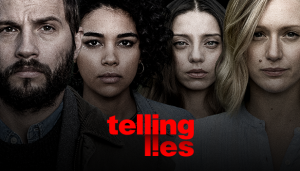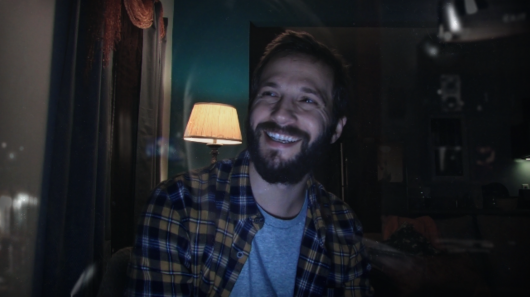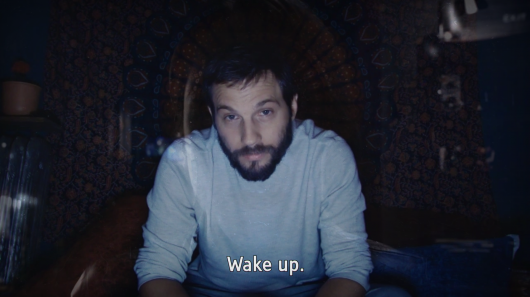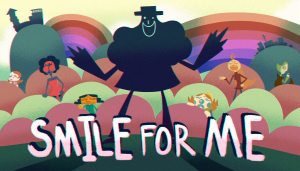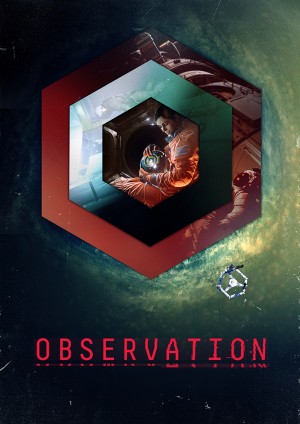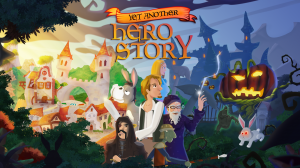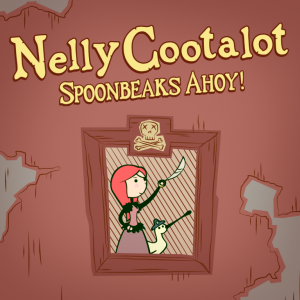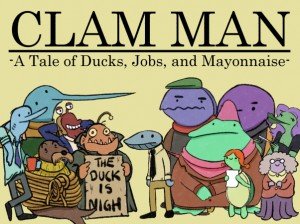Review for Telling Lies

It’s during the eighth minute of watching a stranger read his daughter a bedtime story in Telling Lies that I decide that this might not be the video to crack my case wide open, but at least there were plenty more private conversations where that came from to spy on.
If the premise of scrubbing through very personal FMV-style recordings to piece together an enigmatic story sounds familiar, it’s probably because creator Sam Barlow has been here before. Telling Lies is like the developer’s 2015 cult indie hit Her Story told on a Hollywood scale. Whilst the earlier game had you sorting through fragmented clips of seven fictional police interviews of a victim’s wife to try to uncover the real story behind his disappearance, here players are given a whole NSA database of video files to find, rewind and fast-forward through, captured from the Facetimes and webcam footage of four different people over two years.
In gameplay terms, this boils down to a much bigger cast and a much wider narrative to unravel. Big doesn’t always mean better in Barlow’s latest – its vastness can sometimes leave the investigation feeling rudderless, overwhelming you with detail – but its ambition is startling, and if you can bear spending an inordinate amount of time watching actors staring blankly and nodding, the sudden plot twists rival any of this summer’s blockbuster thrillers.
As Sam explained in our extensive interview about the game, the story kicks off with a woman entering her apartment, plugging an external hard drive into her laptop and booting it up. She opens the NSA database of video files and types the term “love” into the search bar, bringing up a number of videos featuring people saying that exact word. From there on out the computer's desktop becomes the player’s as you take control of the unknown protagonist searching through the database, her presence mainly detected through a slightly eerie reflection of her face on the screen.
Whilst Her Story starts with the premise of a missing person and asks you to find out what happened and why, Telling Lies begins without giving away even these basic motives for why you might be doing what you’re doing, or even who you are. It can feel a little daunting at first, especially if you’re used to the many games out there that prefer to hand-hold with a tutorial on anything and everything. Your only clues are on the laptop itself, such as a note left by the person who sent you the hard drive, as well as a wordy PDF file which acts as an instruction manual to explain how the video search tool works – worth reading, even if it is a little long-winded.
Once you’ve perused these initial documents, it’s time to get snooping. There are three main tabs on the database server: Search, Bookmarks and History. Search is where you type in keywords or phrases which will in turn bring up certain videos that feature them. Importantly, your results will always be limited to the first five clips, so to find others further down the list you’ll have to be more detailed in your wording. Clicking on a video thumbnail will let you see where exactly the phrase you’re searching for is located, and you can then jump in and play it from that point.
You can’t, however, start a video from the beginning. This means often you’ll find yourself rewinding from the end of a dramatic conversation like an argument, and slowly discovering the cause of it in reverse motion – a cool feature that adds to the slow reveal of the plot. Rewinding or fast-forwarding through the clip requires you to drag your mouse to the left or right-hand side of the screen, a quicker action denoting a quicker speed. It mostly works, though keyboard shortcuts for the same actions might have helped, as occasionally you have to drag the mouse a couple of times to highlight how fast you want to move through the video.
Then it’s down to analyzing the clips themselves and figuring out what on earth is going on. Each video is taken from one side of a conversation captured over the Internet between 2017 and the end of 2018. You can find the other side of the chat somewhere in the database too, so often the first puzzle is working out a phrase to input that will find the person on the other end of the exchange. As a hypothetical example, a person in one video might react to an unheard comment by saying something like “A dozen red roses? You shouldn’t have!” (You can see why I stick to reviewing and not script writing.) You could then put in “dozen red roses” into the search and up would pop not only the original video, but also hopefully a second from the other point of view, filling in the rest of the conversation.
Just like in Her Story, the clues aren’t always audio-based – sometimes a visual element, such as a picture in the background or a discussion going on behind the speaker, will give away just as much as what’s being said. Piecing together what’s happening and who everyone is will be a slow process, but one which, much like the recent Return of the Obra Dinn, rewards patience and ingenuity with immense satisfaction when you do uncover some new information, no matter how subtle.
Once you’ve discovered enough from one conversation, you can keep delving deeper by picking up on any unusual words or names mentioned to see if they’re used anywhere else. Rather than typing your searches manually, you can pause the video and click on the subtitles of any clip and search for that specific word, or drag your mouse over a whole sentence to search for all of it. You’ll then be presented with an abundance of new clips – some that took place earlier and others that occurred months after the first video.
This is a mystery that requires a lot a note-taking to make sense of the tremendous amount of detail Barlow has brought to the world. To that end, the desktop features a Simple Notes program for you to write up any relevant information you have gleaned along the way, but bizarrely this function seemingly can’t be brought up whilst a video is playing, meaning you need to keep stopping the current clip to record your thoughts and then bringing the video back up again. Instead I used trusty paper and pen to make my deductions – a little archaic given the contemporary plot, but needs must.
Perhaps I’m not cut out to be an analyst because I rarely used the Bookmarks or History functions either. The more organized gamer may delight in the fact that you can make a bookmark at any point in any video. You can even sort your bookmarked videos into different sections using Tags to mark them with different subjects or themes. History simply keeps track of all of the terms you’ve searched for and the videos you’ve viewed, which I did at least use once or twice after having a complete lapse in memory as to where I’d gotten to. Some may well get more use out of these two functions, but even with the huge number of files to sift through, I rarely found myself in dire need of cataloguing things any further.
The talent portraying the four core characters – Logan Marshall-Green of Spider-Man: Homecoming, Kerry Bishé from Argo, Alexandra Shipp of Dark Phoenix, and Angela Sarafyan from Westworld – plus a host of other people they interact with, had a significant task on their hands of making their one-sided dialogues believable. Not only in the things they say, as each of them spends as much time listening during their video clips as they do talking. Fortunately the actors all do a great job of capturing every slight facial expression and verbal tic to reflect their emotional reactions, which helps make the plot feel that bit more real.
Part of Sam Barlow's approach to making this all seem so natural was to rent out a “compound” that featured different houses and other buildings so that the actors would feel as if they were having a remote conversation whilst both sides of their exchanges were simultaneously being filmed. It sounds ambitious, but it really paid off. I genuinely did feel like I was getting to know these characters as a strange voyeur, listening in on their most intimate conversations and sharing their personal highs and lows, at times almost feeling uncomfortable that I was being made privy to something clearly not meant for me.
I was intrigued by Marshall-Green's lonely and desperate environmentalist (no names, as finding out what everyone is called is part of the puzzle) and why he never saw his wife and daughter anymore. But others may be pulled more towards Shipp's sweet yet slightly naive musician, or Sarafyan's flirtatious webcam girl. Just as in real life, you'll find yourself drawn to some people more than others, and it’s possible to focus on their videos more, shaping your personal experience of the story through your preferences. As the game’s title suggests, not everything they’ve recorded is necessarily the truth, so it’s up to you to determine who (if anyone) can be trusted.
The nature of the video clips in Telling Lies helps add to the sense of realism. Compared to Her Story, which set everything in similar drab police interrogation rooms, here Sam has capitalised on the notion that the files are captured from the Internet (and therefore could be shot almost anywhere) to go full Spielberg and explore multiple different locations. Along with the obvious bedrooms and offices, we vicariously visit house parties, a primary school recital, and even take a walk outside on the street. It's another clever way of reminding you that these are the everyday lives of others you're dipping into, as well as helping to keep each clip feeling different and fresh to watch.
Our mysterious leading lady boots up her laptop at midnight, and as each hour passes in real time a short cue, whether her boyfriend interrupting and telling her it’s late, or her getting up to get a drink, reflects that the clock is ticking. The game takes place across a fixed time period, so five hours in you’ll be given a clear sign that you can end the game then and there or keep on searching. After those five hours spent scouring the database, I had found and studied roughly half of all of the video clips on offer, which gives you some idea of the wealth of footage available. If you do choose to end your investigations there, you'll be treated to a few concluding cutscenes and then given the chance at the main menu screen to hop back in again to chase any leads you might have missed. You'll also unlock a Report option which runs down the things you focused on and what you might've ignored – basically a neat way of letting you know how much of the game you have completed and how much of the story there is still to reveal.
Despite its early opt-out ability, Telling Lies is a game that requires much more than the basic five hours to fully appreciate, and not just because it's nigh on impossible to get through every clip in the time provided. The less said about the plot the better, except that it’s set in modern day USA, weaving together the public and private relationships between the four main characters against the backdrop of protestors campaigning over the building of a new oil pipeline. It's complicated, to say the least, and that's without accounting for the fact that you're normally viewing sequences out of order and then only one side of a conversation at a time.
When the narrative twists are uncovered there's a great sense of achievement, but too often the game’s earnestness for realistic conversations can be its downfall, because in between the excitement there's a lot of waiting, dragging the mouse back and forth, and watching people nodding and reacting to something you can't see. Despite the inherently cinematic nature of video clips playing out in real time, the deliberately slow pacing means that occasionally the sense of enjoyment and discovery is put aside for a greater sense of authenticity. It's a shame, because when it does strike a balance between playability and realism, the game feels incredibly engaging and innovative thanks to its talented cast, sharp dialogue, and its bold attempt to try what no one else is doing right now. In fact, though it appears to be more Hollywood on the surface with its lengthier videos and bigger entourage of recognisable talent, Telling Lies shines brightest when it takes a leaf out of its quieter, more unassuming predecessor and focuses on simply telling its story.
WHERE CAN I DOWNLOAD Telling Lies
Telling Lies is available at:
- GOG -75%
- HumbleBundle
Our Verdict:
A grander take on Her Story‘s FMV database search idea, Telling Lies proves Sam Barlow is still the master of the carefully crafted reveal, even if at times this particular web of deceit unravels a little too slowly.


